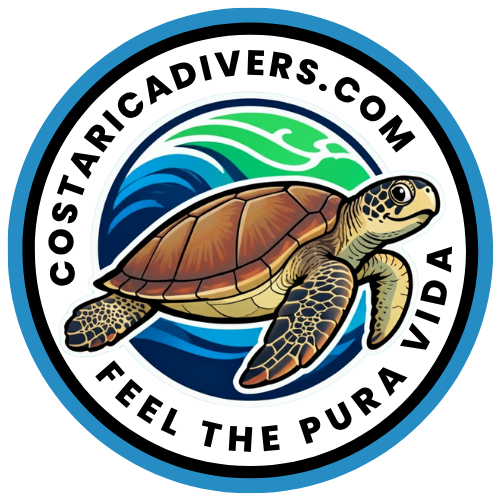I still remember my first dive at Isla del Caño in Costa Rica. As we descended, a massive school of jacks swirled around the coral pinnacles. Three white tip reef sharks rested peacefully below me. That moment showed me why this place is so special.
Scuba diving at Isla del Caño offers one of Costa Rica’s most extraordinary underwater experiences. Located just 16 kilometers offshore from the Osa Peninsula, Isla del Caño protects the last surviving major coral reef on the Pacific coast. The biological reserve covers over 5,800 hectares of pristine marine habitat, creating a sanctuary for sharks, rays, sea turtles, and countless tropical fish.
What makes diving at Cano Island unique is its accessibility. Unlike famous Cocos Island, which requires an expensive week-long liveaboard, you can experience world-class diving on a comfortable day trip from Uvita. Visibility often exceeds 20 meters, water stays warm year-round, and the marine diversity rivals any Central American destination.
In this guide, I’ll share everything from hundreds of dives at Cano Island. You’ll discover what makes each site special, which creatures you’ll encounter, and how to plan your perfect diving adventure.
When divers ask where to find the best scuba diving in Costa Rica, I point them toward Isla del Caño. The biological reserve offers a rare combination of factors that create exceptional conditions.
The reserve was established in 1978 as one of Costa Rica’s first protected marine areas. Nearly five decades of protection allowed the reef to thrive without commercial fishing or coastal development pressures.
The Island protects the last substantial coral reef on Costa Rica’s Pacific side. El Niño events devastated most other Pacific formations in the 1980s, but the island’s offshore location and protected status preserved this ecosystem.

The coral here includes 19 species, creating an underwater landscape of purple lobe coral, orange sea fans, and bright yellow sun polyps. These corals form dramatic canyons, walls, and pinnacles that shelter incredible marine life.
The biological reserve limits daily visitors. Only certain boats can anchor each day, and operators follow strict guidelines. This regulation maintains excellent diving while preserving the ecosystem.
Did you know? Cano Island sits where cool, nutrient-rich currents from deep ocean meet warmer coastal waters. This mixing creates perfect conditions for both reef fish and large pelagic species.
Cocos Island is legendary, but Isla del Caño offers several advantages for most divers.
Accessibility matters. Cocos Island liveaboards require 10+ days and cost $4,000-6,000. You can dive Cano Island on a day trip from Uvita for a fraction of that cost. The boat ride takes just 1-1.5 hours, perfect for travelers with limited time.
Isla del Caño is suitable for divers of all levels. suits divers of all levels. Cocos demands advanced skills with strong currents and deeper dives. Island offers excellent shallow reefs for newer divers alongside challenging sites for experienced ones.
Both feature dramatic volcanic formations covered in healthy coral. Both attract large pelagic schools and numerous sharks. The biodiversity compares well, earning Isla del Caño its “Mini Cocos Island” nickname.
For most Costa Rica visitors, Biological Reserve provides the perfect balance. You get world-class diving with big animal encounters without the extreme commitment.

Every dive at the Island feels like exploring a living aquarium. The species diversity exceeds almost anywhere else I’ve dived in Central America.
White tip reef sharks star at Cano Island. These beautiful 1.5-meter sharks are harmless to divers. On typical two-tank dives, I spot 5-10 white tips resting on sand or cruising reef walls.
Shark Cave (Cueva del Tiburon) is the most reliable spot. Around 10 resident sharks rest inside a small cave during daylight. Watching them stack on top of each other is one of my favorite sights.
Bull sharks occasionally visit deeper sites from May through November. Scalloped hammerheads appear at sites like Bajo del Diablo, though these shy creatures need patience and calm conditions.
Between December and March, some divers spot whale sharks, though these gentle giants are rare. I’ve only seen one twice in all my years here.
Manta rays migrate through between late December and early March. These graceful giants reach wingspans of 7 meters.
Bajo del Diablo got its name (Devil’s Pinnacle) from these creatures. Over a century ago, fishermen mistook their horn-like fins and long tails for the devil.

During manta season, you have good chances of seeing them gliding through blue water. They often visit cleaning stations where smaller fish remove parasites. Watching a manta hover gracefully while being cleaned is breathtaking.
I tell students to watch the blue water, not just the reef, during manta season. That’s where magic happens.
Fun fact: Manta rays have the largest brain-to-body ratio of any fish. They can recognize themselves in mirrors, showing advanced cognitive abilities.
The reef explodes with color from hundreds of tropical species. Parrotfish are my favorites. These bright turquoise fish with beak-like mouths keep the reef healthy by eating algae off coral.
Moorish idols with distinctive elongated fins swim in small groups. Pufferfish, including adorable guineafowl puffers with spotted patterns, cruise slowly through coral. Butterflyfish and damselfish add yellow and blue splashes everywhere.
Large pelagic fish add another dimension. Schools of jacks, barracuda, and snapper patrol deeper water. Massive groupers hide in caves. Tuna and wahoo cruise past pinnacles seasonally.
Sea turtles are regular residents. Green turtles and hawksbills are most common. On typical dives, you’ll see 2-4 turtles swimming along reefs or feeding on sponges and algae.
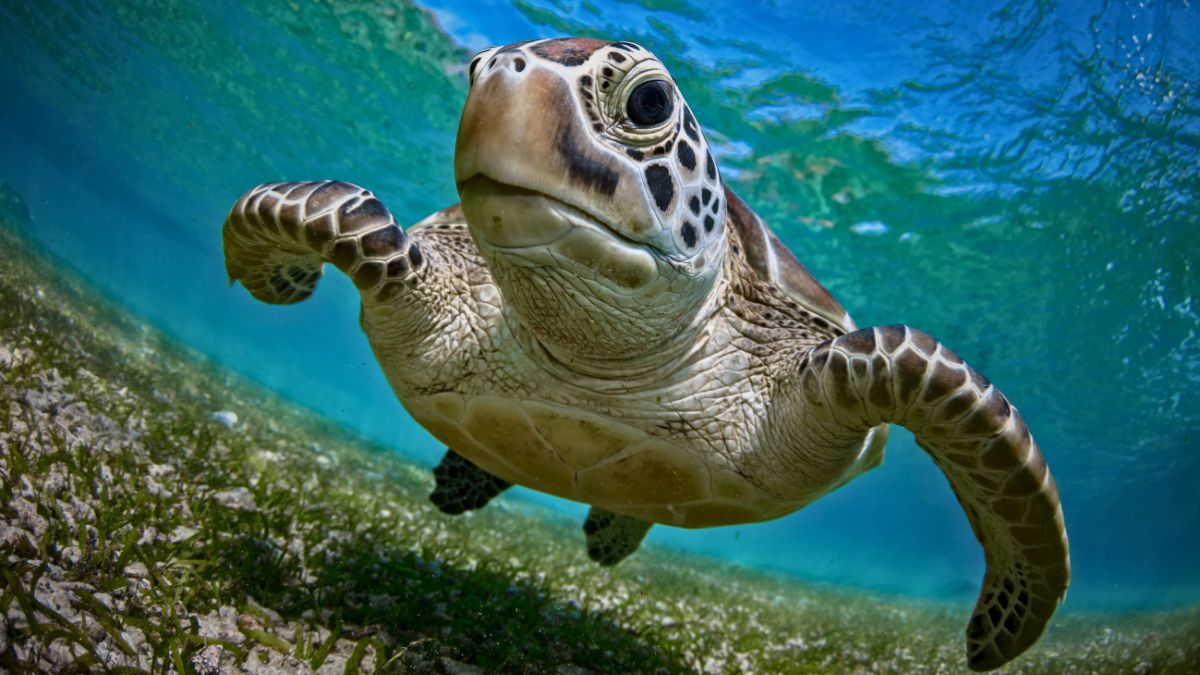
Hawksbills are especially beautiful with pointed beaks and overlapping shell plates. They feed primarily on sponges, making Cano Island’s healthy reef perfect habitat. Green turtles, which grow much larger, graze on seagrass and algae in shallower areas.
Watching turtles glide effortlessly never gets old. They’re curious and often swim close to calm, respectful divers. Never touch or chase turtles. Just hover peacefully and enjoy the moment.
Isla del Caño offers about 20 dive sites around the island. Each has its own character. Let me share the sites I dive most frequently.
Bajo del Diablo is the crown jewel. This massive underwater pinnacle offers dramatic topography. The site covers a vast area with depths from 6 meters down to 45 meters.
Rock formations create peaks, channels, and swim-throughs covered in colorful soft corals and gorgonian fans. You can do three completely different dives here.
What I love most is the abundance of big animals. Hundreds of jacks form swirling bait balls. Giant snappers cruise the pinnacles. During manta season, this is your best chance for oceanic mantas.
Moderate currents bring in pelagic fish. I recommend Bajo del Diablo for divers with 20-30+ logged dives. The rewards are worth it.
Shark Cave sits closest to the island and offers relaxed diving. Maximum depth rarely exceeds 15 meters, perfect for newer divers or as a shallower second dive.
Beautiful reef formations feature plenty of crevices and small overhangs. The highlight is the small cave where white tip sharks rest during the day. Seeing 8-10 sharks piled together is incredible.
Beyond sharks, this site offers excellent macro photography. I always find nudibranchs, shrimp, and small crabs. Butterflyfish, moorish idols, and surgeonfish are everywhere. Occasional mantas or eagle rays pass in the blue.
Calm conditions and shallow depth make this ideal for practicing buoyancy and underwater photography. You can explore every nook without depth limit worries.
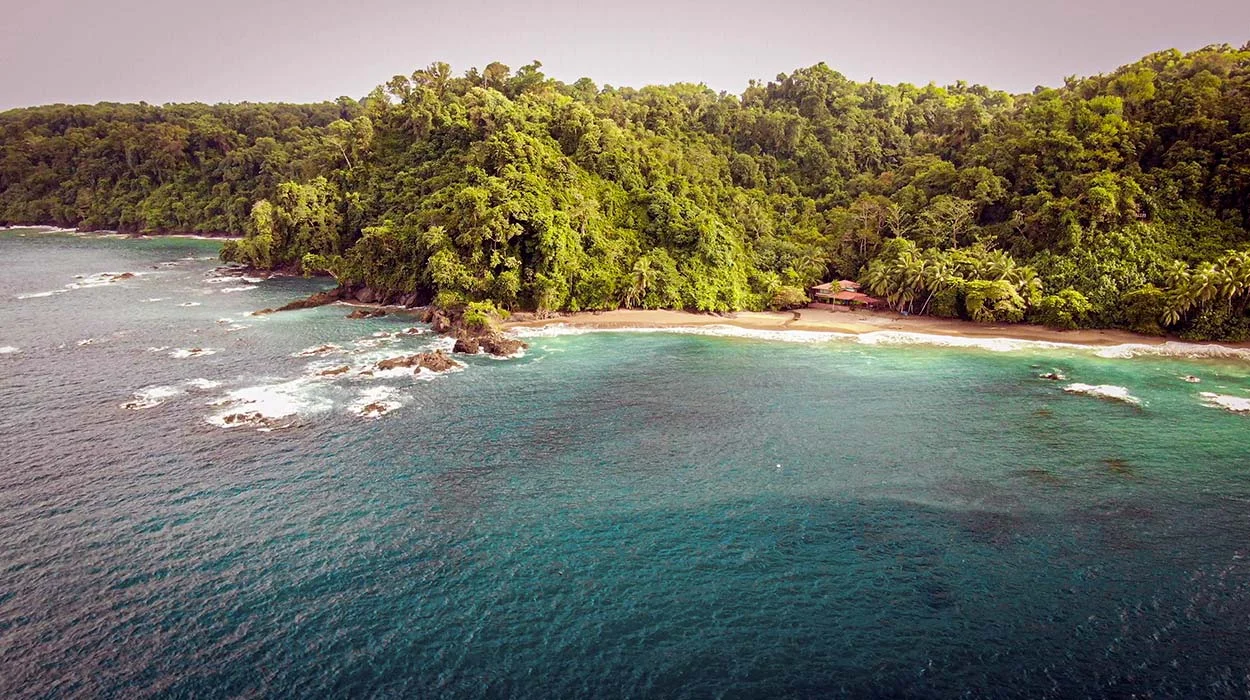
Paraiso sits on the reserve outskirts with more challenging diving. Depths range 18-22 meters, and currents can be stronger.
This site is about fish volume. Blue-striped snappers form enormous schools. Horse-eye jacks patrol in tight formation. Amberjacks hunt in current. Barracuda schools hang suspended, and you might see wahoo streaking past.
I take experienced divers to Paraiso when conditions are right. The drift diving is exhilarating. You relax and let current carry you along the reef. The key is maintaining good buoyancy and staying with your group.
During whale season (July-November and December-March), divers sometimes hear haunting humpback songs. The first time I heard whale song underwater, it stopped me in my tracks. The sound is powerful and beautiful.
Coral Gardens is a shallow, colorful garden perfect for easy diving. With depths of just 5-12 meters, this works wonderfully as a final dive or even for night diving.
Hard corals in vibrant colors create a true underwater garden. Shallow depth means excellent light penetration, so colors pop without dive lights during the day.
White tip sharks rest on sandy patches between formations. Tropical fish are abundant, making this a photographer’s paradise. Relaxed conditions let you focus on details like tiny cleaner shrimp, juvenile fish hiding in coral branches, and colorful nudibranchs.
I often bring newly certified divers here for their first Cano Island experience. Easy conditions build confidence while delivering impressive marine life. You don’t need deep, challenging dives to see something amazing.
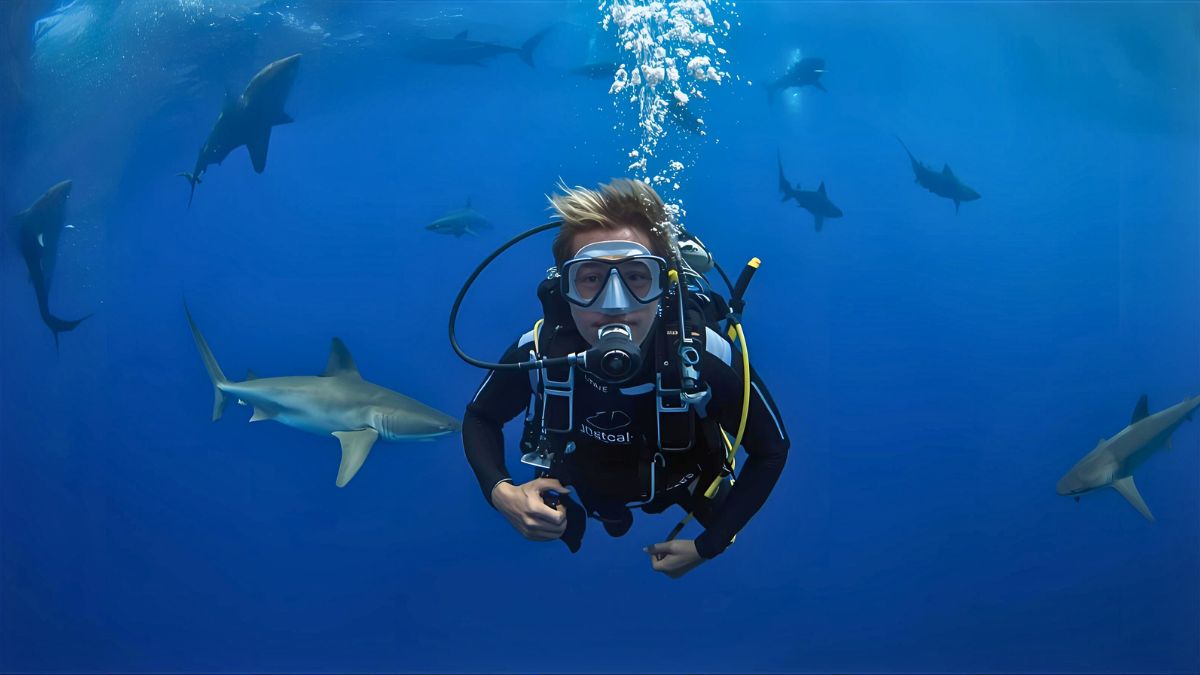
Understanding conditions helps you prepare properly and set realistic expectations.
Water temperature stays consistent year-round between 24-28°C (75-82°F). This tropical warmth means you’ll be comfortable in a 3mm wetsuit, though some prefer 5mm if they get cold easily.
I typically dive in a 3mm full wetsuit comfortably for two dives. During warmest months (March-May), some divers even use shorties.
Watch for thermoclines. Occasionally, you’ll pass through layers where temperature drops suddenly by several degrees. These usually occur around 15-20 meters depth. They’re completely normal.
Did you know? Consistent warm temperatures come from Cano Island’s position in tropical Pacific currents. Unlike the Caribbean side, which experiences cooler upwelling, maintains stable temperatures year-round.
Visibility typically ranges 15-25 meters (50-80 feet), with occasional days reaching 30 meters or more. The offshore location means less river runoff and coastal sediment than mainland sites.
Best visibility occurs during dry season (December-April). During these months, 20-25 meter visibility is common, and you can see entire reef structures spread out. It’s stunning.
During rainy season (May-November), visibility can drop to 10-15 meters some days. However, even 12 meters is still excellent diving. You’ll have no trouble seeing marine life and coral formations.
What matters most is that Isla del Caño consistently offers clearer water than sites closer to shore. The island acts as a barrier, and reserve protection means less sediment.
Most dive sites range 10-25 meters deep, making them accessible to all certification levels. You don’t need to go deep to see incredible marine life.
Shallow sites like Shark Cave and Coral Gardens stay between 5-15 meters. These are perfect for Open Water divers, newer divers building experience, or anyone wanting relaxed dives focusing on macro photography.
Intermediate sites like El Faro and Los Arcos typically range 15-20 meters. These depths give longer bottom times while offering excellent marine encounters.

Advanced sites like Bajo del Diablo can reach 40-45 meters at deepest points, though most action happens at 15-25 meters. I rarely take recreational divers below 30 meters, as best marine life concentrates in shallower zones with better light.
The variety means we can customize your dive day based on certification level and comfort. You’ll never feel pressured to dive deeper than you want.
Current conditions vary significantly between sites. Locations like Shark Cave and Coral Gardens experience minimal current. Sites like Bajo del Diablo and Paraiso can have moderate to strong currents.
Currents are actually why diving is so spectacular. Moving water brings nutrients that feed coral and attracts big fish schools. Learning to dive in current makes you better and more confident.
At sites with current, we do drift dives. You descend, let current carry you along the reef, and the boat picks you up where you surface. It’s actually easier than fighting current, and you cover much more ground.
We always check current conditions before diving and choose sites appropriate for the group’s experience. If you’re newer, we’ll start at calmer sites and work up to more challenging locations.
Timing can make a big difference in what you experience underwater.
Dry season (December-April) offers the most consistent conditions. During these months, you’ll enjoy sunny weather, calm seas, and excellent visibility. January and February are particularly spectacular.
However, you can dive Cano Island year-round and have incredible experiences. I’ve had some of my best dives during rainy season. Marine life doesn’t care if it’s raining above the surface.
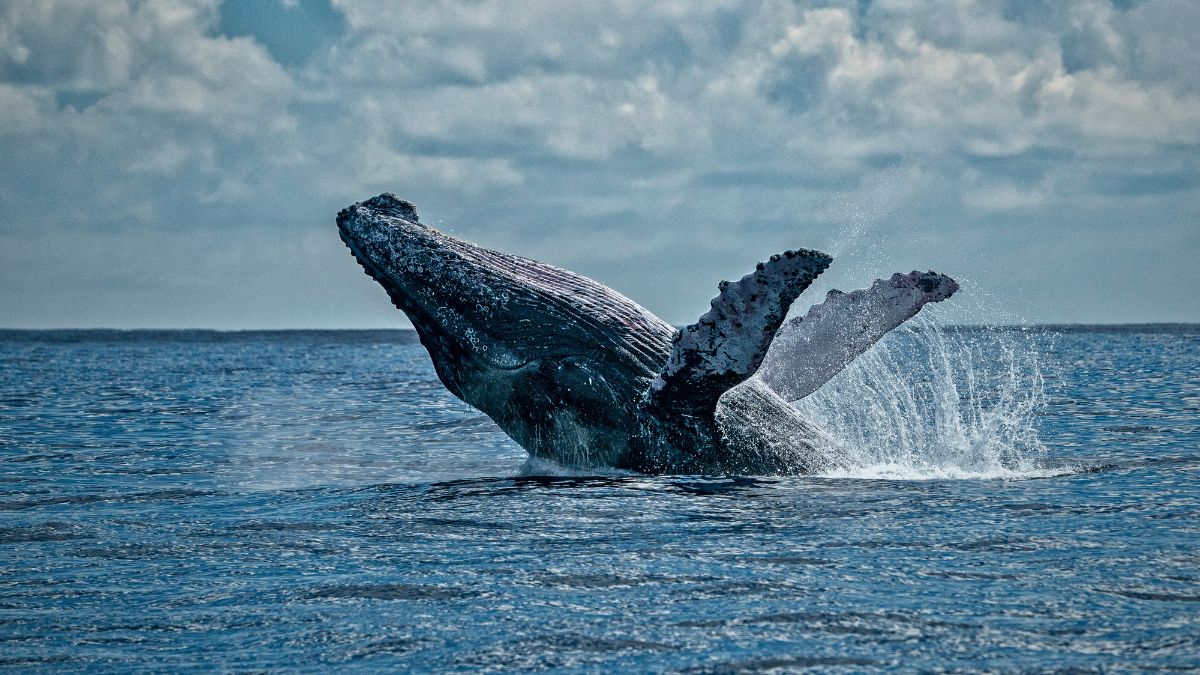
Rainy season (May-November) brings advantages. Fewer tourists mean smaller groups and more personal attention. Water stays warm. This is when you have the best chance of seeing species like bull sharks.
My advice? Don’t stress about timing if your travel dates are fixed. Cano Island delivers amazing diving during any month. Just understand that visibility might be slightly reduced during rainy season, and expect some rain during your surface interval.
Costa Rica experiences two whale migration seasons, and the Island sits directly in their path. Humpback whales from both hemispheres visit these waters.
The first season runs December-March when humpbacks migrate from the north. The second occurs July-October when Southern Hemisphere humpbacks arrive. You have excellent chances during nearly 8 months yearly.
During whale season, it’s common to hear whale song while diving, especially at deeper sites like Paraiso. The sound is incredible, deep, resonant calls you feel in your body as much as hear. Some lucky divers even spot whales underwater, though this is rare.
Yes, we operate diving trips throughout the entire year. Unlike some destinations that close during certain seasons, Cano Island remains accessible all 12 months.
Each season offers different advantages. Dry season (December-April) brings best visibility and calmest seas. You’ll have sunny weather and comfortable boat rides. This is also manta ray season.
Rainy season (May-November) offers its own rewards. Marine life remains abundant. You might see species like bull sharks that are less common during dry season. Rain usually comes in brief afternoon showers rather than all-day downpours.
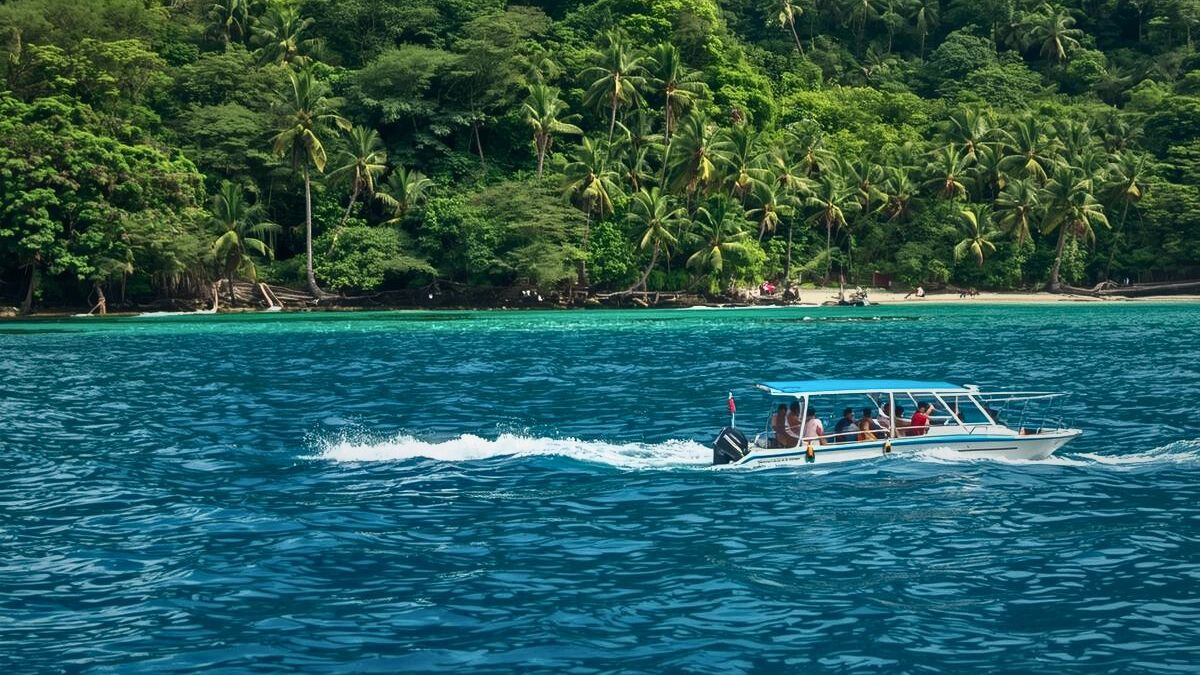
Water temperature stays warm year-round between 24-28°C. You won’t need different exposure protection based on month.
The only consideration is that ocean conditions can occasionally become rough during rainy season, particularly September and October. Very rarely, we might need to cancel due to dangerous seas. This happens maybe 2-3 times per year, and we always prioritize safety.
The logistics of reaching Isla del Caño are straightforward.
Most trips depart from Uvita, a small beach town on Costa Rica’s southern Pacific coast. Uvita offers several advantages. The town has excellent infrastructure with hotels, restaurants, and activities. It’s located within Marino Ballena National Park, so you can combine diving with beach time and whale watching. And it’s only about 3.5 hours by car from San José.
Some operators run trips from Drake Bay, which is closer to Cano Island. The boat ride from Drake Bay takes only 45 minutes compared to 1-1.5 hours from Uvita. However, Drake Bay is much more remote and harder to reach, typically requiring a small plane or rough 4×4 drive plus boat transfer.
I prefer operating from Uvita because it offers the best balance of convenience and access. You get comfortable accommodations, easy transportation, and just a slightly longer boat ride to reach the same dive sites.
The boat journey from Uvita to Cano Island takes approximately 1 to 1.5 hours depending on sea conditions. The island lies about 20 miles offshore, a real expedition into open ocean.
I won’t sugarcoat it – the ride can be bumpy. We’re crossing open Pacific waters with some swell. If you’re prone to seasickness, take motion sickness medication before boarding. I recommend taking it at least 30 minutes before departure.

The boat ride is part of the adventure. You’ll see the dramatic Osa Peninsula coastline receding. Flying fish skip across water. During whale season, you might spot humpback whales breaching. Dolphins frequently swim alongside the boat.
Our boats are equipped with proper safety equipment, shade, and seating. We run small groups, so you won’t feel cramped. Most of the ride time you can relax and mentally prepare for diving ahead.
On the return trip, you’re usually tired but happy. Most people doze off, lulled by wave rhythm. We typically arrive back in Uvita around 2:00-3:00 PM.
Yes, you must hold at least an Open Water Diver certification. Biological reserve regulations don’t permit discover scuba diving (introductory dives for non-certified people) within the protected area.
If you’re not yet certified, we offer complete PADI Open Water courses in Uvita. You can complete theory and pool work, then do your open water certification dives at local sites near Uvita before attempting Cano Island. The whole process takes 3-4 days.
For certified divers, bring your certification card. We need to see proof of certification. Digital cards on your phone work fine.
If it’s been over 6 months since your last dive, I strongly recommend a refresher session. We have a purpose-built dive pool where we can review essential skills. It’s better to shake off rust in the pool than struggle during your first dive at Cano Island.
Advanced certifications aren’t required for most sites. However, if you want to explore deeper sections of Bajo del Diablo or similar sites, having your Advanced Open Water certification opens up more options.
Absolutely! Isla del Caño offers excellent diving for beginners and newly certified divers. We have several shallow sites with minimal current perfect for building experience.
If you’re a new diver, we’ll start you at sites like Shark Cave or Coral Gardens. These locations offer maximum depths of 10-15 meters, usually calm conditions, and incredible marine life. You’ll see white tip sharks, sea turtles, and colorful reef fish without challenging skills required.
We keep groups small and always dive with experienced divemasters who provide extra guidance to less experienced divers. If you need to ascend early or spend extra time on buoyancy, that’s completely fine. There’s no pressure to keep up with advanced divers.

That said, I want to be honest. The boat ride crosses open ocean and can be rough. If you’re prone to seasickness or boat anxiety, consider starting with our local Uvita dive sites before attempting Cano Island. Build your confidence in easier conditions first.
Once you’re comfortable with basic skills, Cano Island becomes accessible and rewarding. Some of my favorite moments have been watching new divers experience their first shark encounter or see their first manta ray.
Most diving operators provide all the necessary equipment: a regulator, buoyancy compensator, wetsuit (3 mm or 5 mm), mask, fins, and weights. However, it is always a good idea to ask so that you don’t get any unpleasant surprises.
You’re welcome to bring your own equipment if you prefer, though most traveling divers appreciate not packing heavy gear. The main items worth bringing are your own mask (for better fit) and dive computer if you have one.
Here’s what I recommend:
A typical two-tank dive trip to Cano Island from Uvita costs around $199-230, including all equipment, park entrance fees, professional guides, boat transportation, and lunch. This is significantly more affordable than other world-class dive destinations in Costa Rica. Nitrox fills are available for an additional $20 per tank for certified nitrox divers. Dive computer rentals cost $10 per day if you don’t have your own.
Yes! We offer snorkeling tours to Cano Island for non-divers. The snorkeling is exceptional, with shallow coral gardens teeming with tropical fish, sea turtles, and rays. You’ll visit two different snorkeling sites during the day trip. However, if you want to experience the full magic of sites like Bajo del Diablo and Shark Cave, I highly recommend getting your scuba certification first.
Cano Island is located approximately 20 miles (32 kilometers) offshore from Uvita Beach. The boat ride takes 1 to 1.5 hours depending on ocean conditions. While this might seem like a long journey, the island’s offshore location is exactly what makes the diving so spectacular. The distance from shore means clearer water, healthier coral reefs, and less impact from coastal development.
Both locations offer excellent diving, but they’re quite different experiences. Manuel Antonio features rocky reef diving closer to shore with depths typically 10-18 meters, making it perfect for beginner divers and shorter boat rides. Cano Island offers more dramatic topography, better visibility, larger marine life encounters (including manta rays and more sharks), and the only substantial coral reef on the Pacific coast. If you have time, I recommend diving both locations to experience the full range of Costa Rica’s underwater diversity.
Yes, I strongly recommend purchasing travel insurance that specifically covers scuba diving activities. Standard travel insurance policies often exclude scuba diving. I personally recommend DAN (Divers Alert Network) insurance, which costs around $35 annually and provides comprehensive coverage for diving accidents, hyperbaric chamber treatment, and medical evacuation. It’s a small investment that provides essential protection when diving internationally.
This guide is based on years of personal diving experience at Cano Island and verified information from authoritative sources:

Author: Peter Sawicki
Peter Sawicki is a PADI instructor with many years of experience and hundreds of certified students to his name. He is a technical diver, cave explorer, and climbing instructor with a background that spans both big wall expeditions and demanding technical ice climbs. Recognized multiple times with the prestigious PADI Elite Instructor Award, Peter combines deep professional knowledge with a passion for sharing the world of adventure, both underwater and above it.


